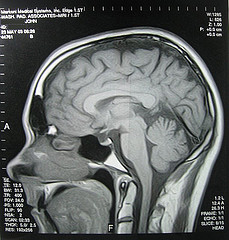 Nearly one in five U.S. kids have at least one diagnosable mental disorder, according to a recently published Child Trends report, with anxiety disorders such as obsessive compulsive disorder (OCD) or post-traumatic stress disorder (PTSD) affecting about 10 percent.
Nearly one in five U.S. kids have at least one diagnosable mental disorder, according to a recently published Child Trends report, with anxiety disorders such as obsessive compulsive disorder (OCD) or post-traumatic stress disorder (PTSD) affecting about 10 percent.
The researchers say young people with mental disorders may be prone to engage in substance abuse, and are often associated with other “negative emotional and behavioral patterns,” such as lackluster academic performances, impaired relationships and a greater likelihood of entering the juvenile justice system.
“The single most disturbing potential consequence of adolescent mental disorders is suicide,” according to the report. “Although suicide can have multiple causes, 90 percent of adolescents who commit suicide had a diagnosable mental disorder, and up to 60 percent of them were suffering from depression at the time of their death” Suicide, the researchers added, is the third leading cause of death for the nation’s 10- to 24-year-old population.
According to the study, depression is the most common mental disorder experienced by young people, affecting an estimated 20 percent of the nation’s 12- to 17-year-old population. Researchers state that almost 30 percent of high-school students report depression symptoms, with 36 percent of 9th-to-12th grade female students reporting that they felt “hopeless almost every day for two weeks or longer” over the course of a year.
Also affecting kids are attention deficit hyperactivity disorder, found in an estimated 9 percent of the nation’s adolescents, and major depression, affecting about 8 percent of all young people in the United States. Eating disorders and conduct disorders affect 5 and 3 percent of the nation’s adolescent population, respectively.
Although a majority of mental disorders are first diagnosed during adolescence, the authors of the report believe in some instances, early diagnoses could provide both short- and long-term benefits.
“As in other arenas of health, early intervention or prevention can be an effective way to address potential mental disorders before they reach the stage requiring treatment,” according to the report. “Although not all mental disorders are accompanied by early warning signs, people who interact with and care about adolescents should be alert to marked changes in mood or behavior that may suggest problems.”
Photo Courtesy of jsmjr.































